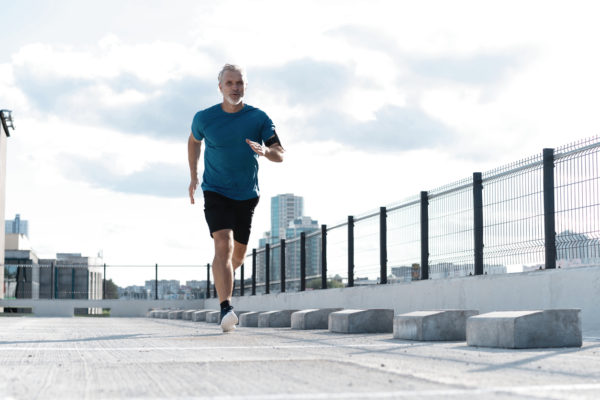
What is Knee Osteoarthritis?
A common condition among older adults, osteoarthritis, develops when the cartilage that usually serves as a cushion in a joint wears away, leaving bone to rub against bone.
The American Academy of Orthopedic Surgeons estimates that more than 8 million Americans older than age 45 suffer from osteoarthritis of the knee.
If you’re struggling with knee pain and suspect it might be osteoarthritis, here’s how you can manage it effectively:
- Start with the Basics: Losing extra weight can reduce joint pressure, and a consistent exercise routine is key. Walking and swimming are particularly beneficial for strengthening knee-supporting muscles.
- Explore Treatment Options: Alongside physical therapy, we offer manual therapies and use ice, heat, and over-the-counter pain relievers to help with pain management.
- Advanced Solutions: For more persistent cases, there are new treatments like cooled radiofrequency ablation and cryoneuromodulation, which offer longer-lasting relief.
- Get Personalized Help: If your knee pain persists, give us a call. We’ll work with you and your doctor to create a customized exercise plan and explore advanced pain management options tailored to your needs.
In this article, we’ll dive into the specifics and provide you with the step-by-step process in finding relief for knee osteoarthritis.
First Steps
For osteoarthritis of the knee, it is first recommended that you lose any extra weight to take some pressure off the joints. Similarly, it is recommended that you follow an exercise program to strengthen the muscles around the joints.
Actually, exercise is considered the most effective nondrug treatment for osteoarthritis because strong muscles help support and protect the joints affected by arthritis!
Walking and swimming are among the most recommended exercises for osteoarthritis patients.
Additional exercises that can help manage osteoarthritis of the knee include:
- Straight Leg Raises: Strengthens the quadriceps without putting strain on the knee.
- Hamstring Curls: Targets the muscles at the back of your thigh to support knee stability.
- Step-Ups: Improves strength and endurance by stepping up and down on a step or platform.
- Wall Sits: Builds strength in the thighs and buttocks while minimizing joint impact.
- Clamshells: Strengthens the hip muscles to help stabilize and support the knee.
- Bridges: Engages the glutes and core, supporting overall lower body strength.
- Seated Knee Extensions: Helps improve the range of motion and strength in the quadriceps.
- Side-Lying Leg Raises: Works the outer thigh muscles to support knee alignment and function.
- Swimming or Water Aerobics: Provides a low-impact way to improve cardiovascular fitness and joint mobility.
Regardless of what treatment you and your physician decide is best for you, physical therapy and daily exercise should be the first step in your treatment plan.
In physical therapy for osteoarthritis, you can expect a comprehensive approach to help manage pain and improve joint function:
- Personalized Assessment: Your therapist will evaluate your specific needs and create a tailored plan.
- Exercise Programs: Expect guided exercises to strengthen the muscles around your knee, improve flexibility, and enhance mobility.
- Manual Therapy: Techniques like massage or joint mobilization may be used to alleviate pain and improve joint movement.
- Education: You’ll learn how to perform daily activities in ways that minimize stress on your knees.
- Progress Monitoring: Regular check-ins will track your progress and adjust your plan as needed.
Our physical therapists at The Jackson Clinics can help create the right regimen for you.
Stepping It Up
To supplement our exercise programs and manual therapies, ice packs, heat application and over-the-counter pain relievers can help alleviate pain too.
- Ice Packs: Applying ice to the affected area can reduce inflammation and numb the pain. It’s typically recommended for acute pain or swelling.
- Heat Application: Heat packs or warm baths can relax muscles and increase blood flow, which may help alleviate stiffness and discomfort.
- Over-the-Counter Pain Relievers: Medications such as ibuprofen or acetaminophen can provide temporary relief from pain and inflammation.
If that’s still not enough, in recent years a number of new other treatments have been developed for patients with advanced osteoarthritis.
- Cooled Radiofrequency Ablation: This procedure relieves pain by deactivating certain nerves in the knee. It is usually performed on people for whom conservative treatments have failed but who are too young or too old for knee replacement surgery. The procedure targets the nerves responsible for transmitting pain, offering significant relief that can last several months.
- Cryoneuromodulation: This innovative technique injects tiny needles frozen to –126° into the skin to kill targeted sensory nerves around the knee, thus preventing the nerves from transmitting pain signals. The extreme cold prevents these nerves from sending pain signals to the brain. Pain relief from one session can last up to six months—in many cases, enough to help patients through a physical therapy regimen. and can help manage their symptoms more effectively.
These advanced procedures provide additional options for managing pain and improving quality of life when traditional methods are no longer sufficient.
Next Steps
If you suffer from knee osteoarthritis that doesn’t seem to go away: give us a call for an appointment.
We can work with you and your physician to develop an individualized exercise routine. A regular exercise routine will deliver long-term pain relief that will last well beyond the effects of any short-term measures.
We also work with some of the brightest minds in the field of Pain Management, and can help even in the most severe of cases.
Did you know you have Direct Access* to Physical Therapy? No referral, no problem!
Want more from TJC? Make sure to follow us on Facebook!

















